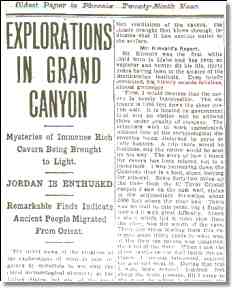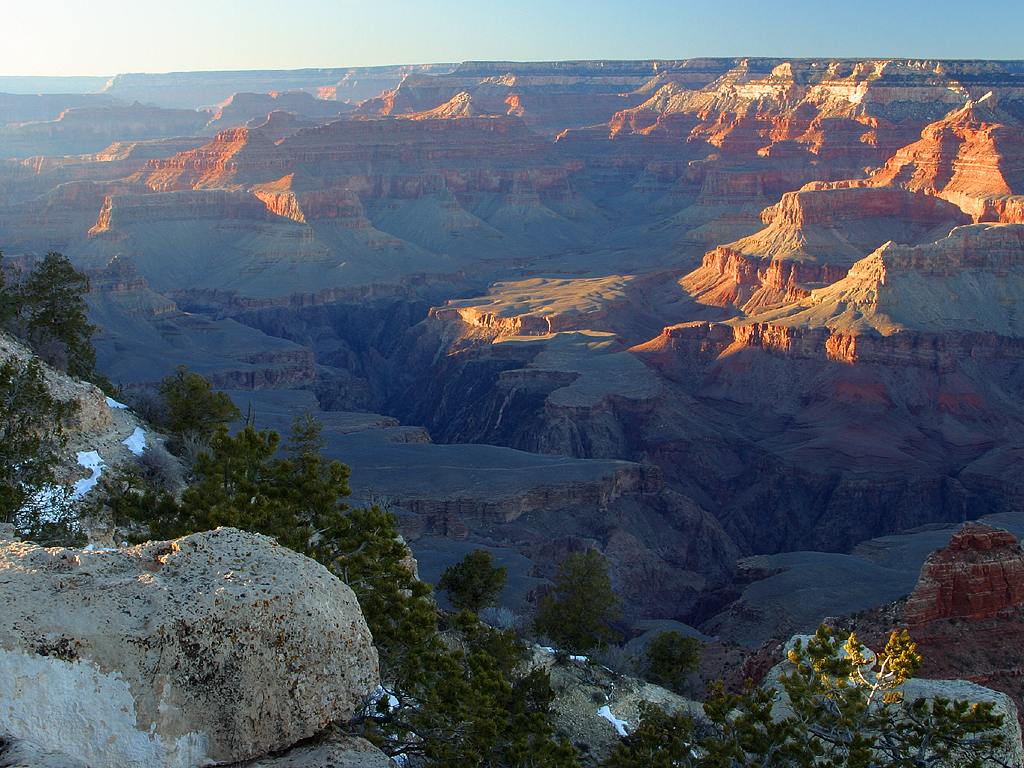
It has been some years since I did my own study of G.E. Kincaid and his claimed discovery, the remnants of a lost Grand Canyon Civilization in an extensive cave system. One of our underground [no pun] correspondents sent me most of the following information about this famous subterranean mystery.
One thing I would like to address before you begin. Debunkers love to claim that during the late 1800s thru the early 1900s newspapers all over the country were using “yellow journalism” – making up stories – to sell newspapers. This is one of those cases. I wholeheartedly disagree. In fact I wrote a series of articles with what I feel discredits that way of thinking. The series had to do with the newspaper reports of Flying Machines in 1897, but the same arguments fit here. You can read this series of articles at “Airship Mysteries of the 1800s” . . . EDITOR
THE ARIZONA GAZETTE of April 5th, 1909 Text of original Grand Canyon article
Report from long time Insider Correspondent:
To: THEI (USA) FILED: 2/10/12
When the Smithsonian discovered an ancient Egyptian colony in a Grand Canyon CAVERN
Did Egyptians cross the Pacific Ocean and wander the American Southwest thousands of years ago?
In the early 20th century, claims of such a discovery were made by two Smithsonian-funded archaeologists, who spoke of a thriving civilization tucked within a series of caverns carved into the side of a remote portion of the Grand Canyon. What did the archaeologists find? What evidence did they bring back? Hell, did these men even exist?
A parallel North American civilization?
A story on the front page of the April 5, 1909 edition of the Arizona Gazette recounted the discovery of a series of bizarre caves and artifacts in the Marble Canyon region of the Grand Canyon. The report claimed two Smithsonian-funded archaeologists, Prof. S. A. Jordan and G.E. Kincaid, [NOTE: G.E. Kinkaid is sometimes spelled G. E. Kincaid] are responsible for the find. As the article noted:
[These] discoveries which almost conclusively prove that the race which inhabited this mysterious cavern, hewn in solid rock by human hands, was of oriental origin, possibly from Egypt, tracing back to Ramses. If their theories are borne out by the translation of the tablets engraved with hieroglyphics, the mystery of the prehistoric peoples of North America, their ancient arts, who they were and whence they came, will be solved. Egypt and the Nile, and Arizona and the Colorado will be linked by a historical chain running back to ages which staggers the wildest fancy of the fictionist.
Later in the article, a cross-legged idol resembling Buddha is described along with a large tomb filled with mummified humans: a veritable mash-up of Egyptian and East Asian cultures.
A dangerous region to explore
Although this remote area of the Grand Canyon makes for perilous traveling, expeditions by private collectors and academics went forward. The site of Kincaid’s discovery was roughly 42 miles away from El Tovar Crystal Canyon, and the Arizona Gazette article noted that the cavern’s entrance was 1500 feet down a sheer cliff. This is not the easiest terrain to cover, but it’s topography that could be overcome today.
Conspiracy theorist John Rhodes claims to know the exact location of the caverns — the site is guarded today by a lone soldier carrying an M-16 and that the caverns are a museum for civilization’s shadowy elites. To make things even more bizarre, David Icke connects Kincaid’s Grand Canyon discovery with reptilian overlords in his 1999 book The Biggest Secret.
Smithsonian denials
No record exists of Kincaid or Professor Jordan within the Smithsonian’s Department of Anthropology, nor is there a paper trail at the Smithsonian detailing the artifacts gathered on the expedition. When asked directly about Kincaid’s claims, a Smithsonian Institute representative once said:
Well, the first thing I can tell you, before we go any further, is that no Egyptian artifacts of any kind have ever been found in North or South America. Therefore, I can tell you that the Smithsonian Institute has never been involved in any such excavations.
According to conspiracy theorists, the Smithsonian Institute went so far as to destroy artifacts to maintain this historical viewpoint. Espousers of this theory mention man-made mounds with plaster walls strewn across the American Midwest and a series of fire-hewn coffins found in Alabama in 1892 that were turned over the Smithsonian Institute, only to be lost in the years following.
A paucity of evidence
Kincaid and Jordan returned without artifacts or pictures of the findings, leaving the Arizona Gazette article as the sole evidence of the expedition.
[NOTE: A second article mentioning Kincaid has been found – SEE BELOW . . . EDITOR]
No data outside of the article substantiates the existence of Professor Jordan, and Kincaid’s only other known reference comes in a March 12 article in the Arizona Gazette. [see below] The March 12 piece notes that Kincaid is in Yuma, Arizona. It mentions simply that he is an avid photographer who carries very high-end photography equipment. This is a particularly questionable tidbit, as no photos of Kincaid’s discovery of the mummified bodies or a Buddha-like statue exist, let alone general photos of this portion of the expedition.
It is possible that Kincaid, if he existed, worked under a false name, as the Arizona Gazette articles mentions his hunt for “the mineral”, a euphemism for gold? Theodore Roosevelt made the extraction of gold from the Grand Canyon illegal in 1908 when he deemed the canyon a national forest.








PRESS RELEASE April 30th, 2014
A great anthropological and archaeological discovery has been made within the Grand Canyon of the United States. Joseph Lake Voros, of Florida, has established the site of a Mesoamerican Totlec settlement first described in a 1909 article by The Arizona Gazette detailing the work of G.E. Kincaid, who also found the site; but most records were lost and the story became untraceable. Joseph Lake Voros, using advance software of Google Earth has placed the coordinates, recorded stunning visuals of the site, however not entered the site yet.
For further information please email Joseph Lake Research trustee111@gmail.com